第1章
WE have now to consider the parts which are useful to animals for movement in place (locomotion); first, why each part is such as it is and to what end they possess them; and second, the differences between these parts both in one and the same creature, and again by comparison of the parts of creatures of different species with one another.First then let us lay down how many questions we have to consider.
The first is what are the fewest points of motion necessary to animal progression, the second why sanguineous animals have four points and not more, but bloodless animals more than four, and generally why some animals are footless, others bipeds, others quadrupeds, others polypods, and why all have an even number of feet, if they have feet at all; why in fine the points on which progression depends are even in number.
Next, why are man and bird bipeds, but fish footless; and why do man and bird, though both bipeds, have an opposite curvature of the legs.For man bends his legs convexly, a bird has his bent concavely; again, man bends his arms and legs in opposite directions, for he has his arms bent convexly, but his legs concavely.
And a viviparous quadruped bends his limbs in opposite directions to a man's, and in opposite directions to one another; for he has his forelegs bent convexly, his hind legs concavely.Again, quadrupeds which are not viviparous but oviparous have a peculiar curvature of the limbs laterally away from the body.Again, why do quadrupeds move their legs criss-cross?
We have to examine the reasons for all these facts, and others cognate to them; that the facts are such is clear from our Natural History, we have now to ask reasons for the facts.
At the beginning of the inquiry we must postulate the principles we are accustomed constantly to use for our scientific investigation of nature, that is we must take for granted principles of this universal character which appear in all Nature's work.Of these one is that Nature creates nothing without a purpose, but always the best possible in each kind of living creature by reference to its essential constitution.Accordingly if one way is better than another that is the way of Nature.Next we must take for granted the different species of dimensions which inhere in various things; of these there are three pairs of two each, superior and inferior, before and behind, to the right and to the left.Further we must assume that the originals of movements in place are thrusts and pulls.(These are the essential place-movements, it is only accidentally that what is carried by another is moved; it is not thought to move itself, but to be moved by something else.)